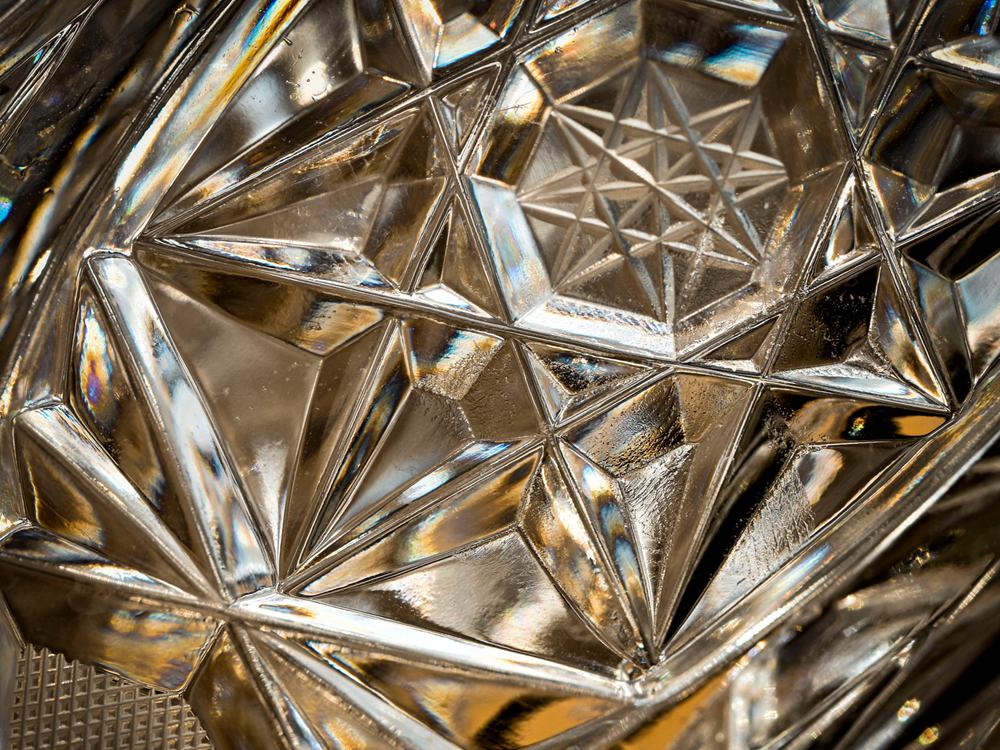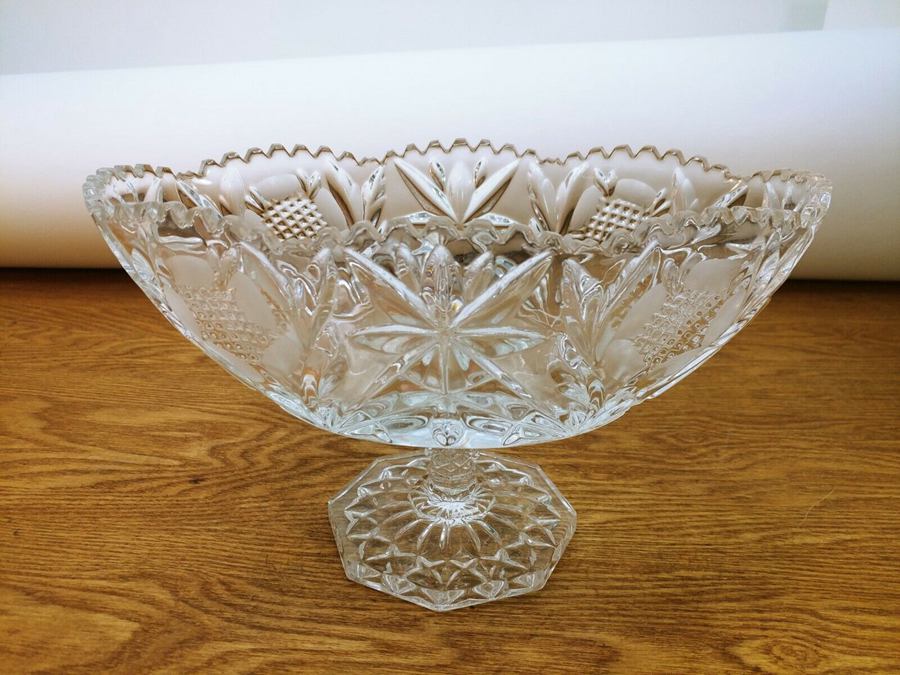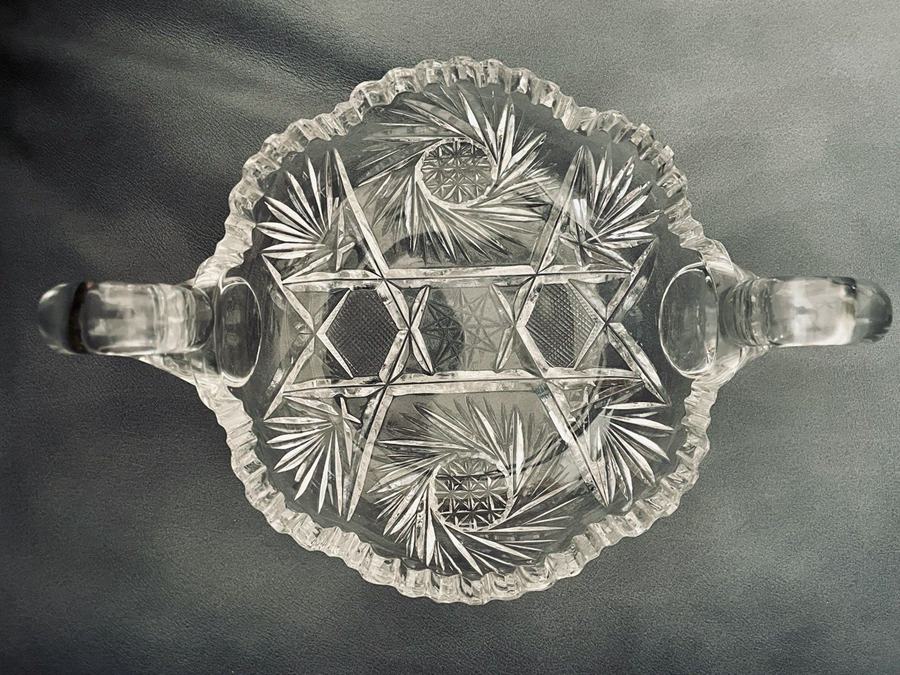When exploring the world of antique cut glass, it’s essential to understand the different patterns and forms that make these pieces so distinctive and valuable. Identifying and pricing antique cut glass patterns can be a challenging but rewarding process, especially when you uncover a hidden treasure. This guide is designed to help you navigate the key patterns and provide insight into their worth.
To identify vintage glass patterns, examine important factors like the age, brand, and sharpness of the details. Glassware produced in the 1860s, for example, might feature basic mitered designs, blow marks, and natural forms, fetching prices in the range of $600 – 700. Over time, as you become familiar with various antique cut glass patterns, such as the Diamond, Valencian, and Estelle, you’ll become more adept at recognizing the tell-tale signs of authenticity and quality.
Remember, the key to successful identification and pricing lies in careful observation and research. Compare your findings to well-known patterns from manufacturers such as Strauss, Baccarat, Hawkes, Fry, and Company, Libby Glass Company, and Meriden. By doing so, you’ll develop an appreciation for the intricate artistry of antique cut glass and the fascinating history behind each piece.
Table of Contents
History of Antique Cut Glass
Origin and Development
The history of cut glass dates back approximately 2,000 years, tracing its origins to the Bronze Age. Ancient glassmakers introduced glass cutting techniques by holding a cooled piece of glass to a grinding wheel, resulting in fine grooves, intricate patterns, and compelling designs. These early methods transformed glassmaking into an art form, as tradespeople experimented with various techniques and styles.
Brilliant Period
The Brilliant Period took place from the late 19th to early 20th century, representing the peak of cut glass popularity in America. During this time, highly skilled artisans crafted glass with a focus on intricate patterns. As you explore antique cut glass, remember that the Brilliant Period offers lavish designs with a rich history.
Influence of Egypt and Assyria
Egypt and Assyria had a profound influence on the development of cut glass, as Egyptians first introduced cut glass in 1,500 B.C. Both regions played a critical role in the refinement of glassmaking techniques, including glass coloring, molding, and engraving. Their contributions laid the foundation for the ornate, decorative patterns still admired in antique cut glass today.
George Ravenscroft and Lead Oxide
In the 17th century, English glassmaker George Ravenscroft revolutionized the industry by introducing lead oxide. This addition increased the glass’s refractive index, creating a luxurious sparkle and increasing the glass’s weight. Considered a valuable innovation, Ravenscroft’s lead oxide formula paved the way for the further development of cut glass artistry.
Henry William Stiegel and German Cut Glass
In the 18th century, Henry William Stiegel brought German glassmaking techniques to America. Known for his delicate and detailed designs, Stiegel introduced new motifs and designs to glassmaking in America. Keep an eye out for examples of Stiegel’s work as a representation of German-influenced cut glass.
World War 1 Impact on Cut Glass Industry
The onset of World War 1 greatly impacted the cut glass industry. The war caused a shortage of materials and skilled labor, which led to a decline in glass production. After the war, the industry witnessed a shift towards more streamlined and cost-effective manufacturing processes. As a result, the artistry of antique cut glass patterns remains a testament to the skills and craftsmanship of a time before modern mass production.
Identification of Antique Cut Glass Patterns
Sunburst
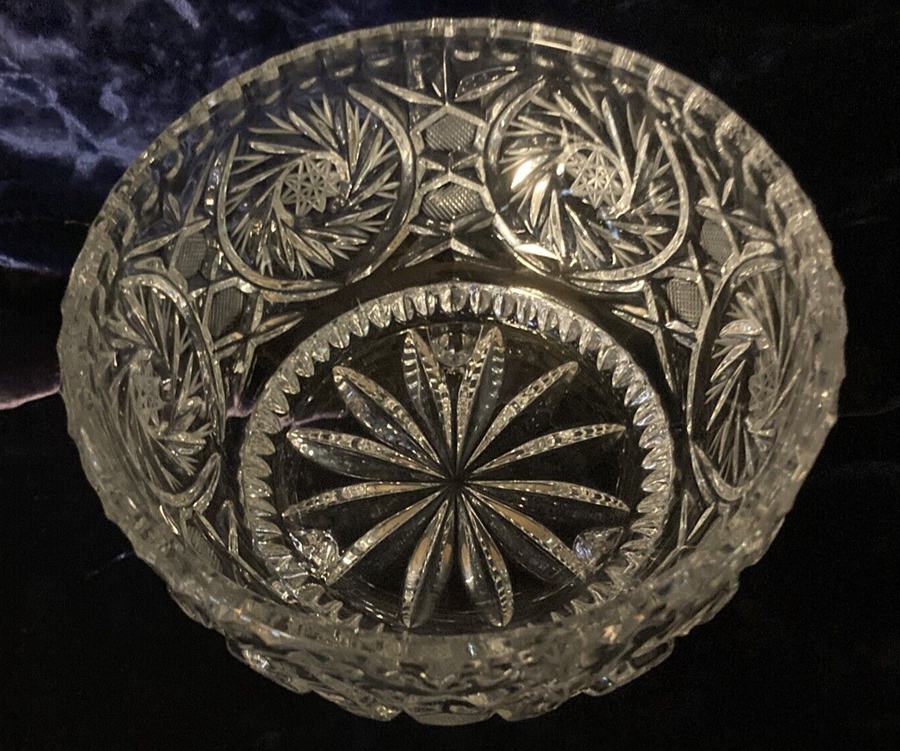
Sunburst is a popular pattern that commonly features a central star surrounded by radiating beams. To identify sunburst patterns, look for bright, sharp cuts that give the glass vibrancy.
Hobstar
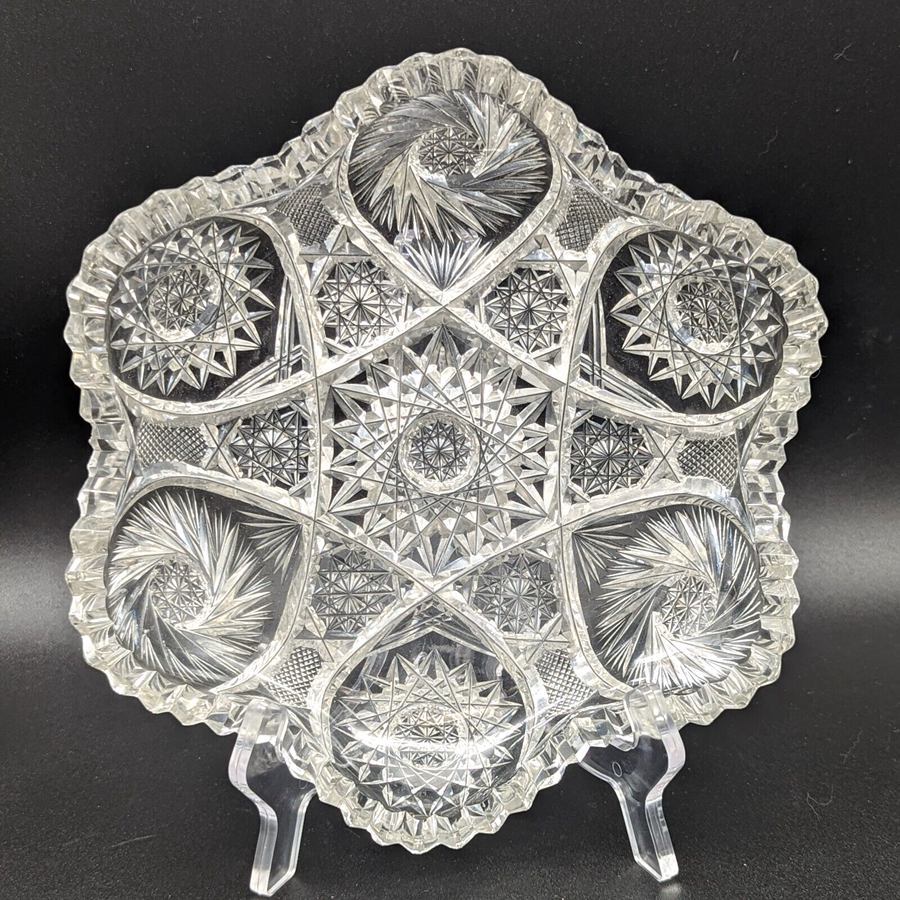
The Hobstar pattern features a series of star-shaped designs, often with deep cuts. Keep an eye out for intricate geometric shapes and a repeating pattern that covers the entire piece.
Strawberry Diamond
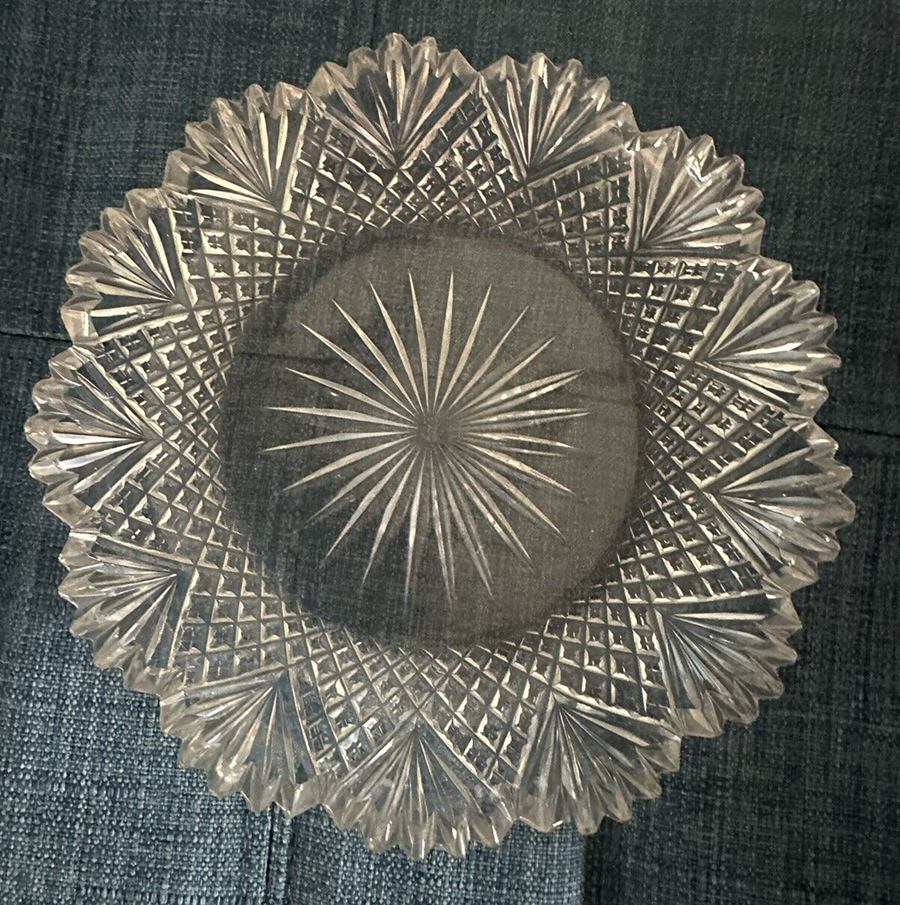
Strawberry Diamond patterns have a resemblance to the fruit, featuring diamond-shaped patterns composed of raised dots. Look for evenly spaced dots and well-defined shapes.
Russian
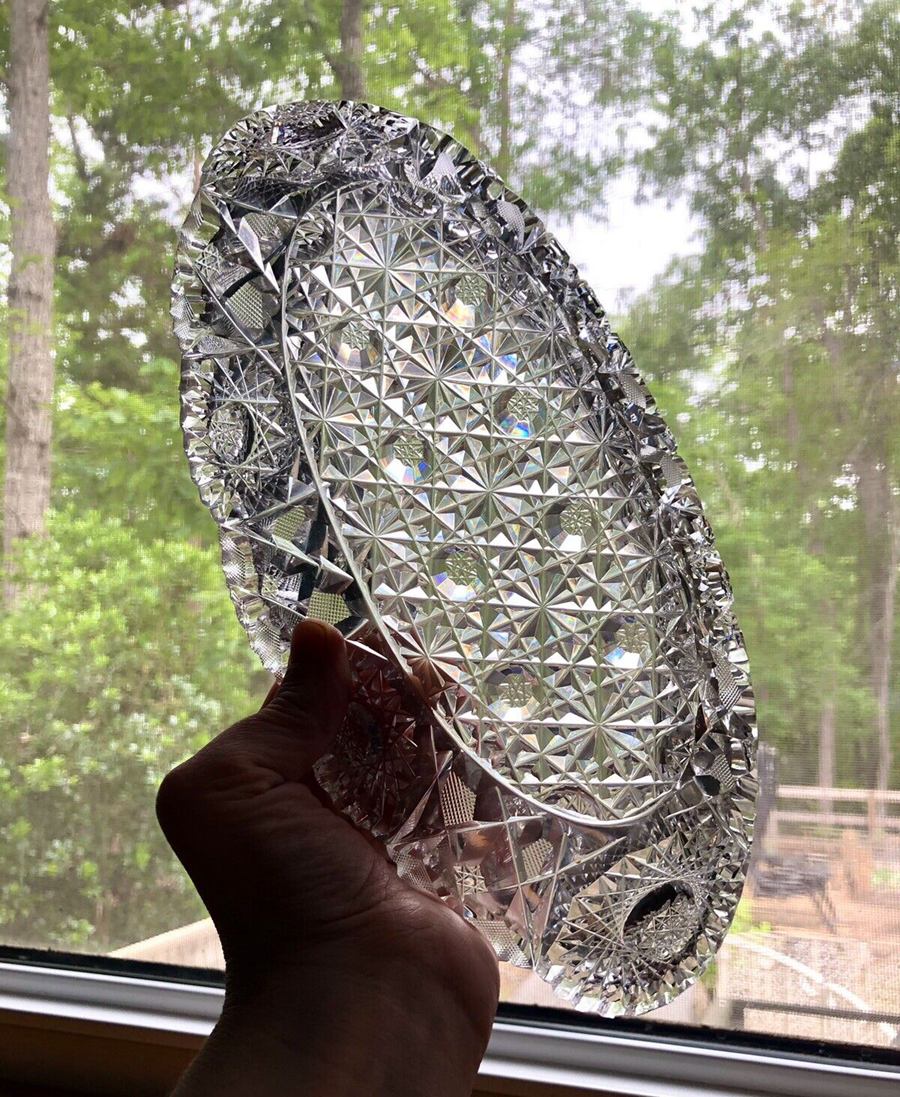
The Russian pattern is characterized by crisscrossing cut lines and geometric shapes. To identify this pattern, look for the intersecting lines and well-defined borders.
Intaglio

Intaglio patterns have images or designs engraved into the glass surface. These patterns can be difficult to identify, as they often feature a wide range of themes and styles. Look for skillfully executed engravings and finely detailed images.
Waterford
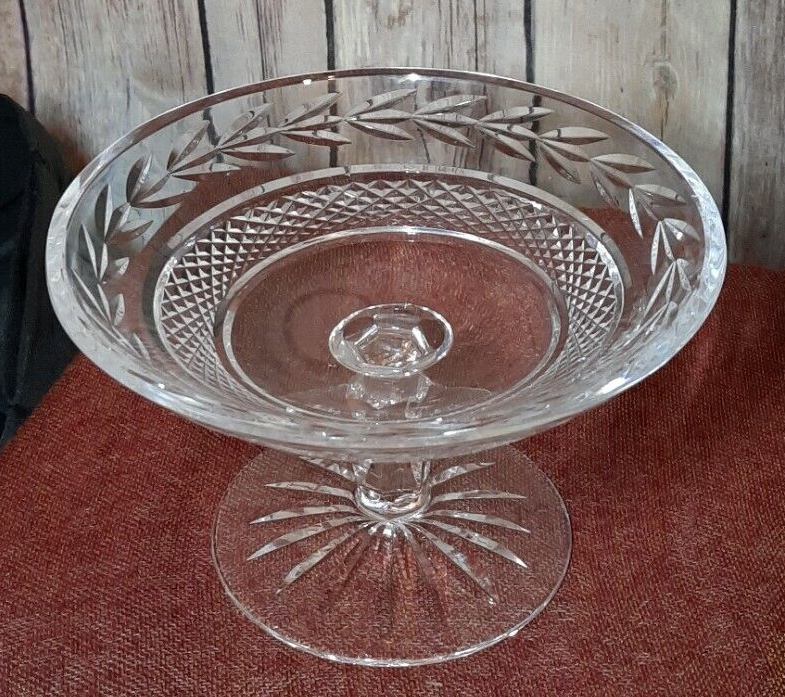
The Waterford pattern is known for its deeply cut geometric lines, often resembling a grid or lattice. Look for strong, symmetrical lines and angles.
Rosette
Rosette patterns are characterized by circular or flower-like shapes. To identify this pattern, look for glass pieces adorned with evenly spaced, symmetrical designs.
Gothic Arch

Gothic Arch patterns feature a series of arches with pointed ends. The pattern is reminiscent of medieval architecture, so keep an eye out for distinct, arch-like shapes.
Cane and Star
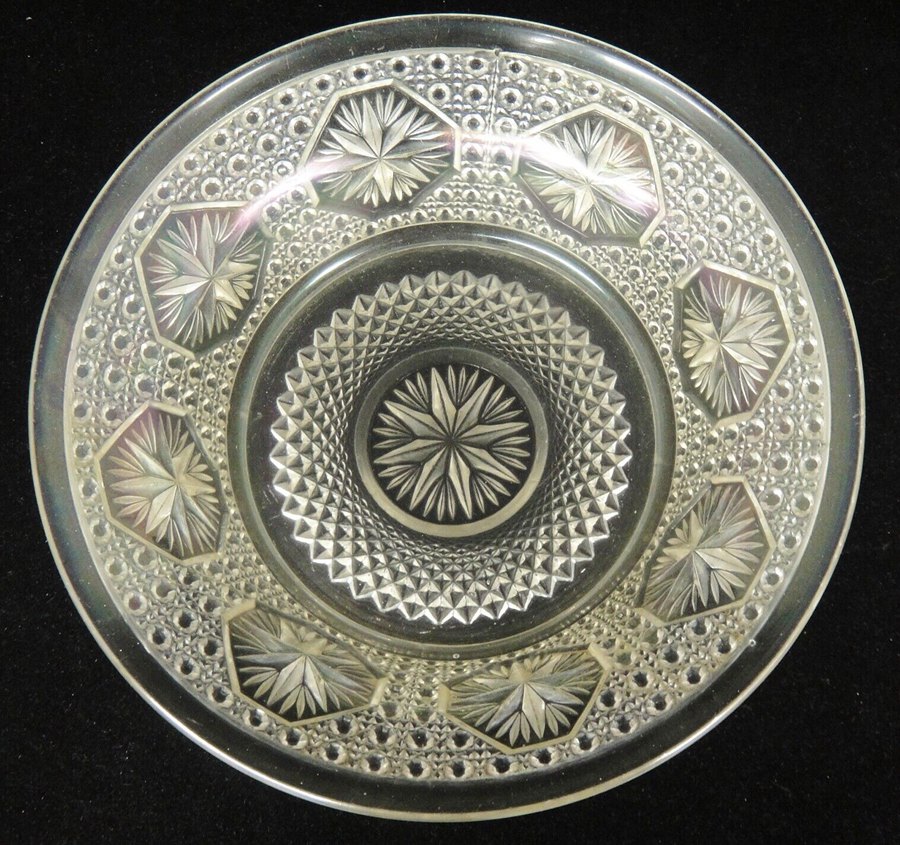
The Cane and Star pattern consists of alternating vertical lines and star shapes. Check for a regular arrangement of well-defined stars and canes.
Thistle
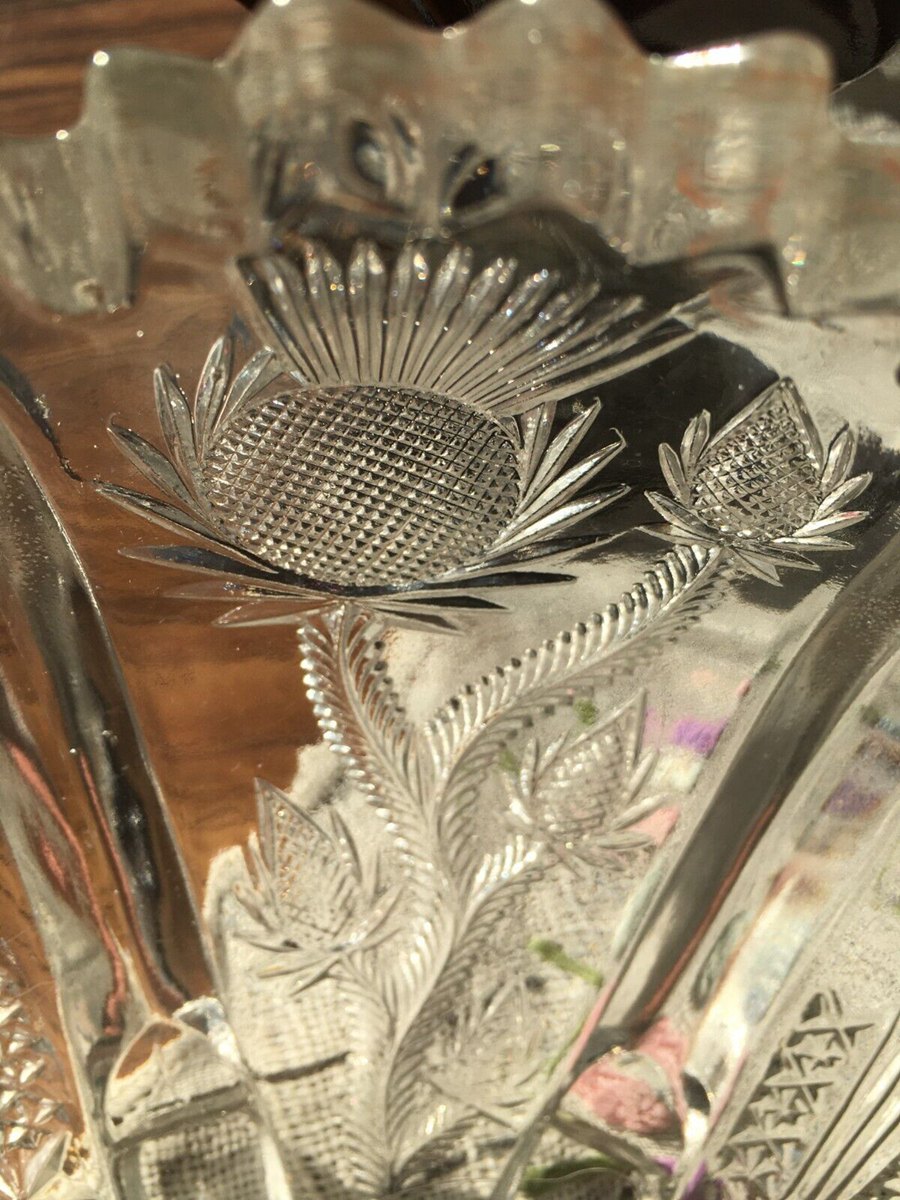
Thistle patterns capture the essence of the thistle plant, with uniquely shaped cuts resembling the plant’s leaves. Look for glass pieces with distinctive, organic shapes.
Bull’s Eye
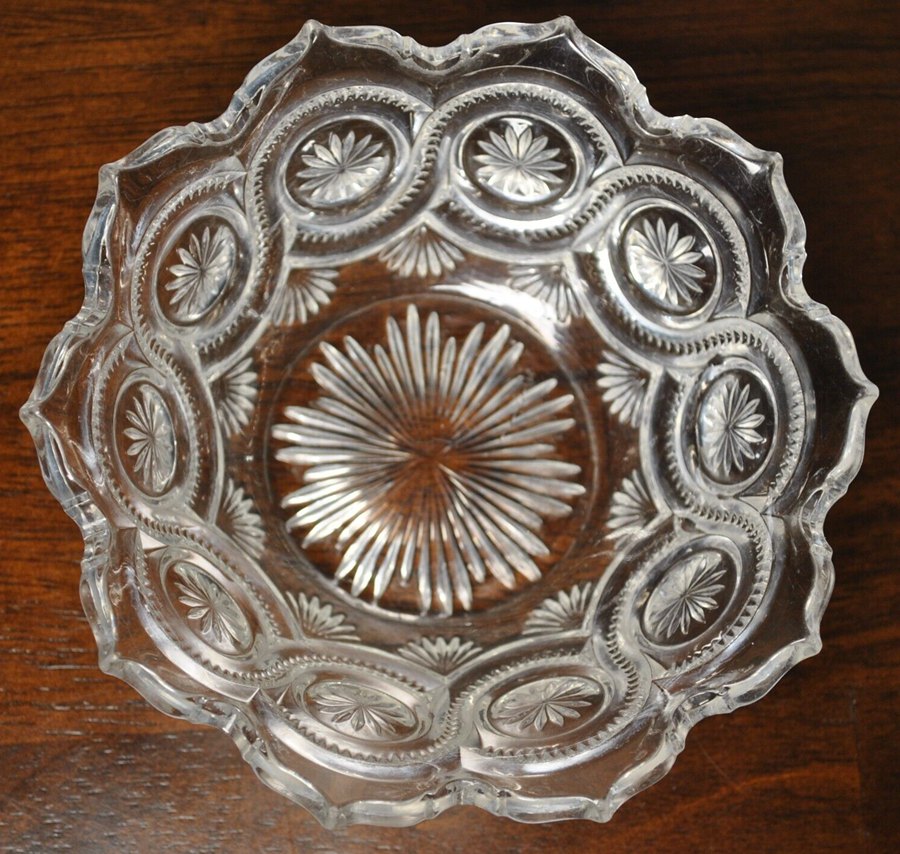
The Bull’s Eye pattern features circular cuts and is easily identifiable by its central ‘eye’ design. Keep an eye out for clearly defined circles and graduated sizes.
Prism
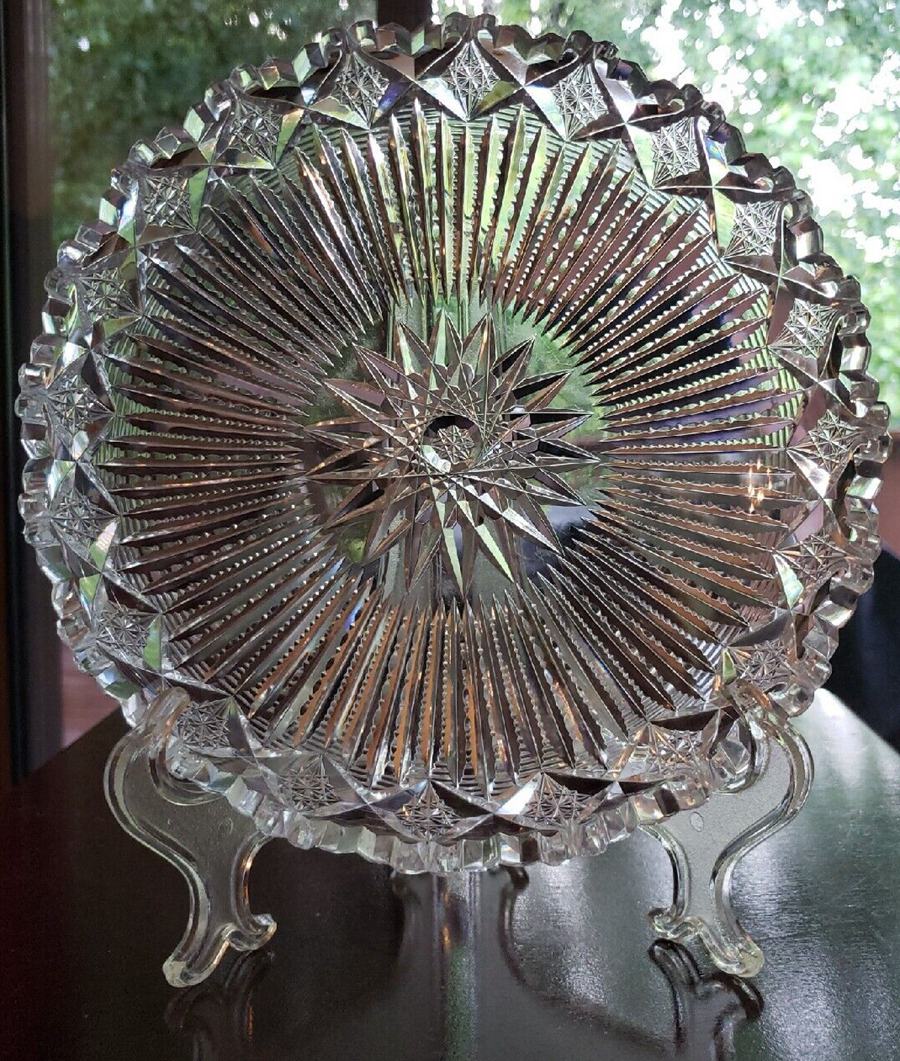
Prism patterns are characterized by linear cuts that resemble prisms. Look for evenly spaced, symmetrical lines that form a structured pattern across the glass.
St. Louis

St. Louis patterns are known for their intricate floral designs, combining elements of star, fan, and intaglio patterns. Look for detailed, well-defined floral motifs and sharp cuts.
Buzzsaw
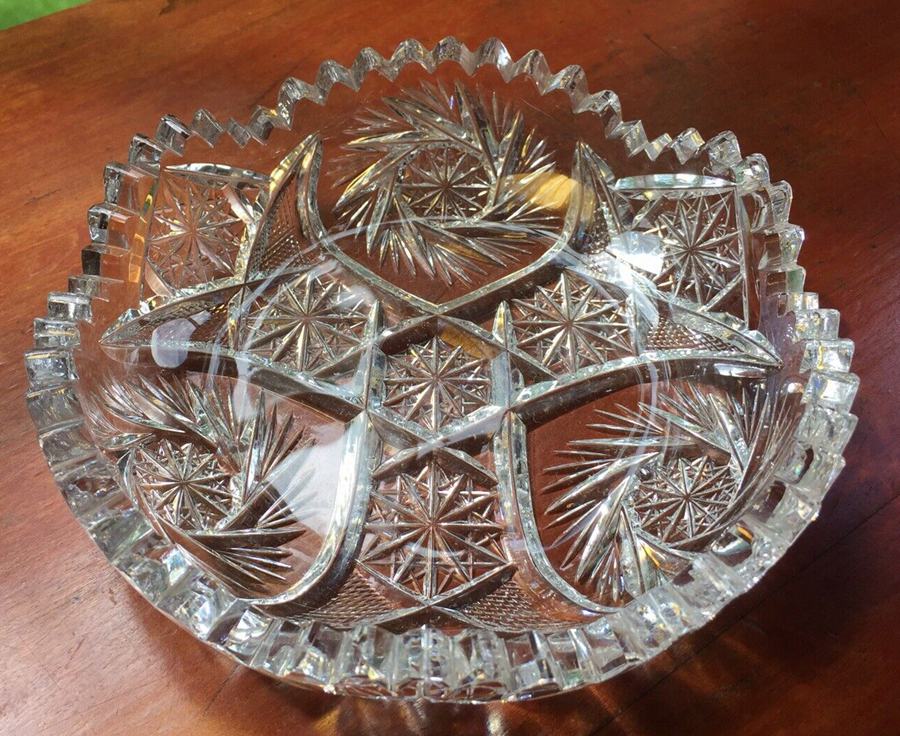
The Buzzsaw pattern features circular saw blade-like designs, with even, radiating cuts. Identify this pattern by looking for clean, sharp lines and a consistent overall design.
Feather
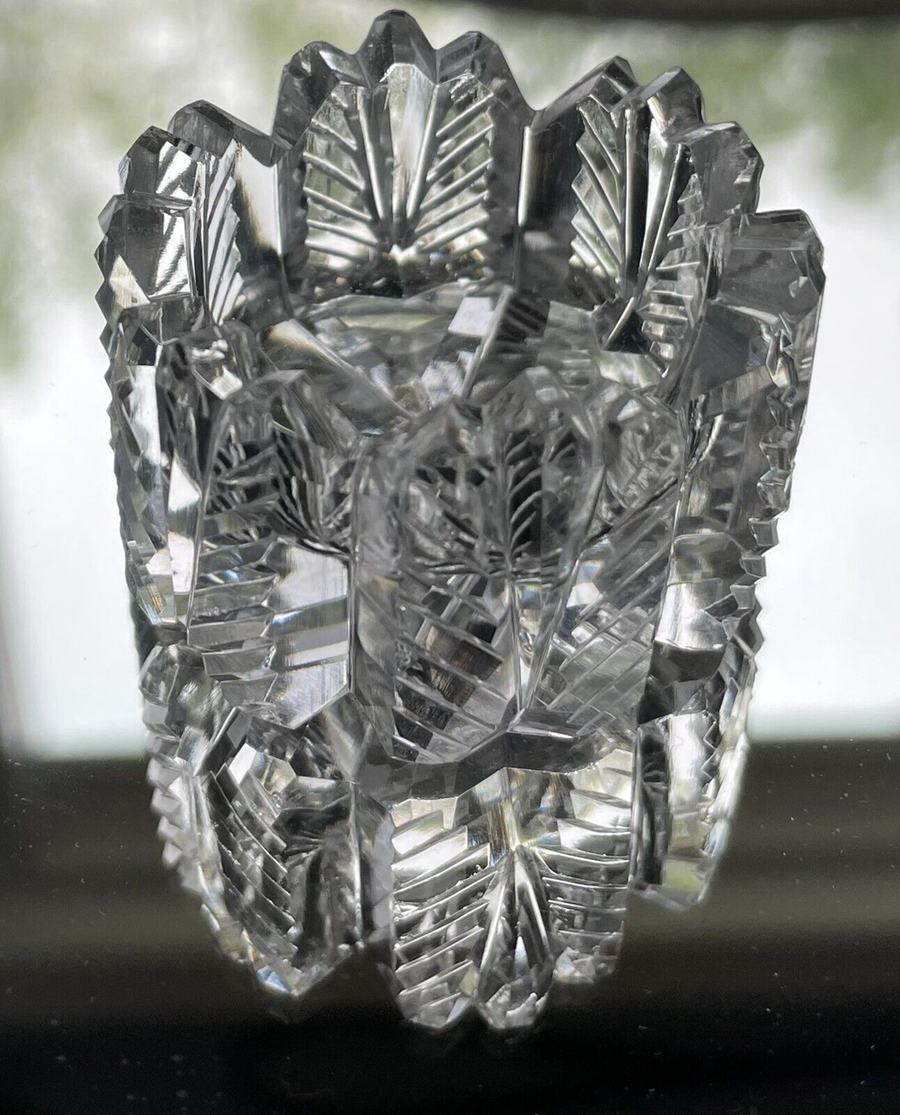
Feather patterns showcase a series of wispy, feather-like cuts. To identify this pattern, look for delicate, elongated shapes that span the glass’s surface.
Pillar

The Pillar pattern is easily recognizable by its series of vertical lines and geometric shapes. Look for strong, even lines and a structured layout.
Snowflake
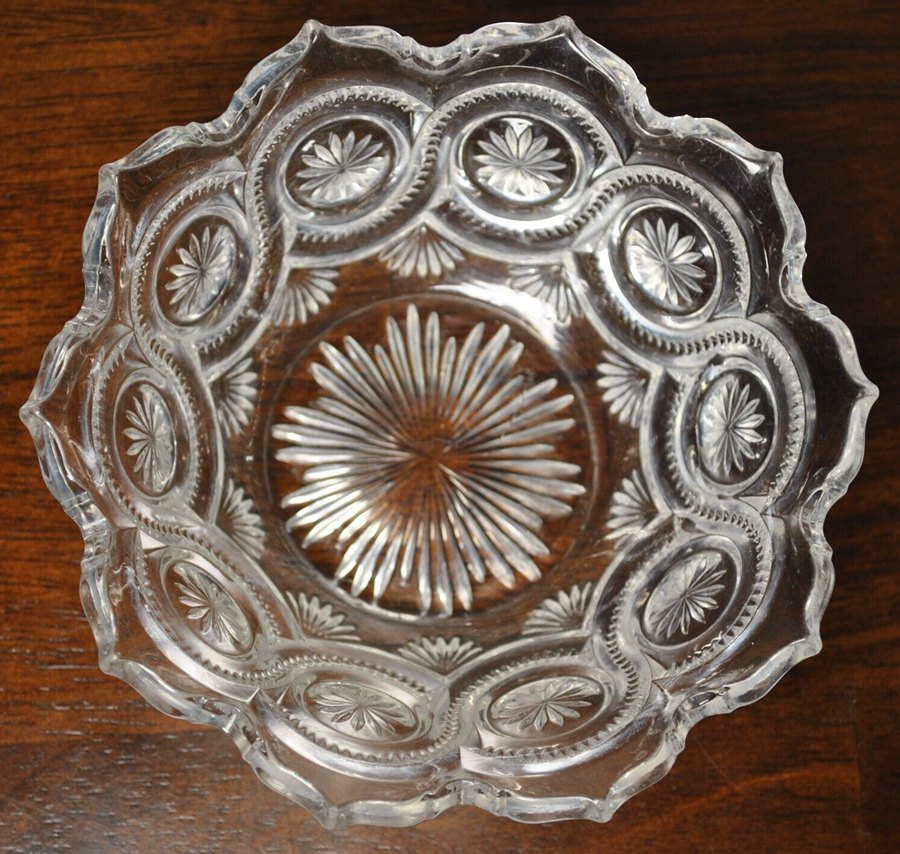
Snowflake patterns showcase delicate, symmetrical cuts and shapes that resemble snowflakes. Identify this pattern by looking for intricate, symmetrical designs.
Sunflower
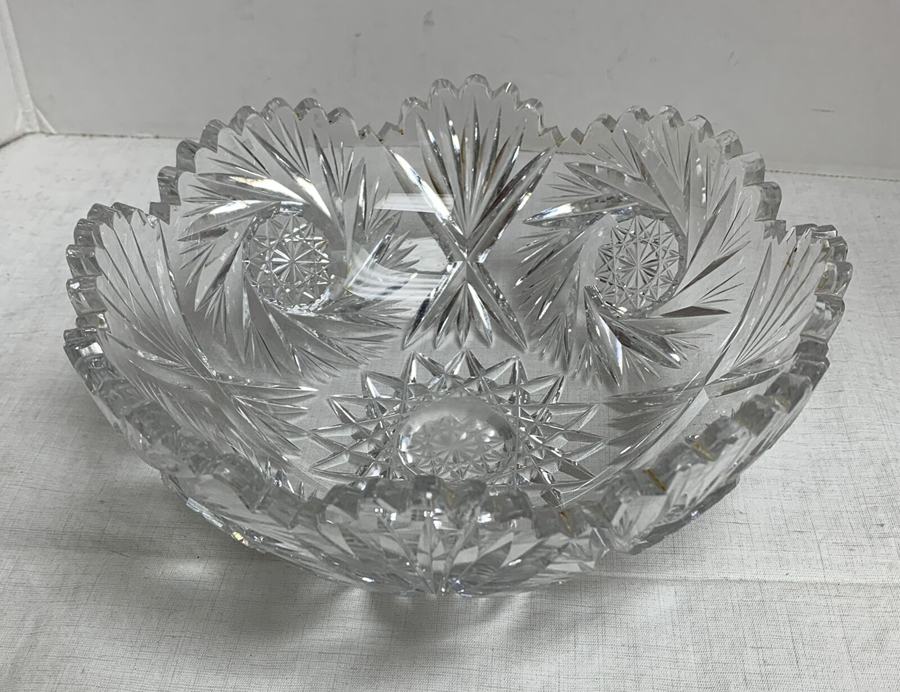
Sunflower patterns capture the essence of the sunflower, with petal-like designs radiating from a central point. Look for bold, sweeping designs and a strong focal point for identification.
Beaded Oval
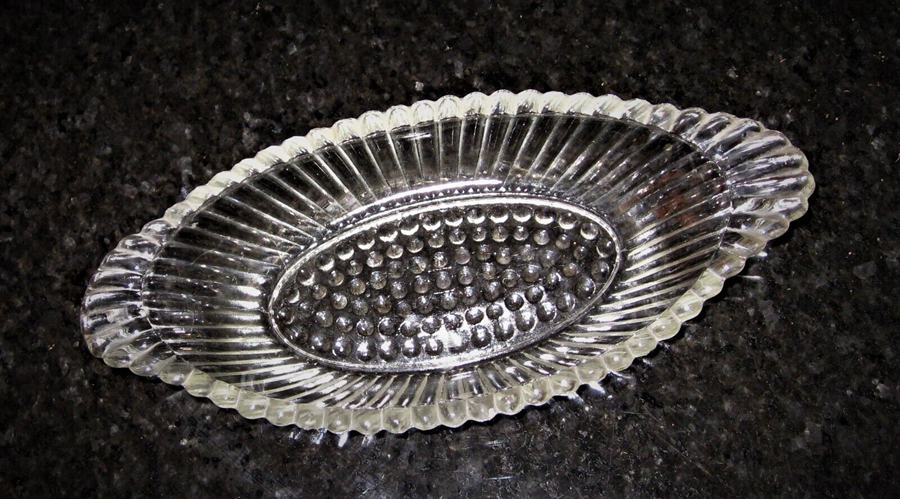
Beaded Oval patterns consist of oval shapes with a beaded perimeter, often resembling a string of pearls. Look for even beading and symmetrical, well-defined ovals.
Flute
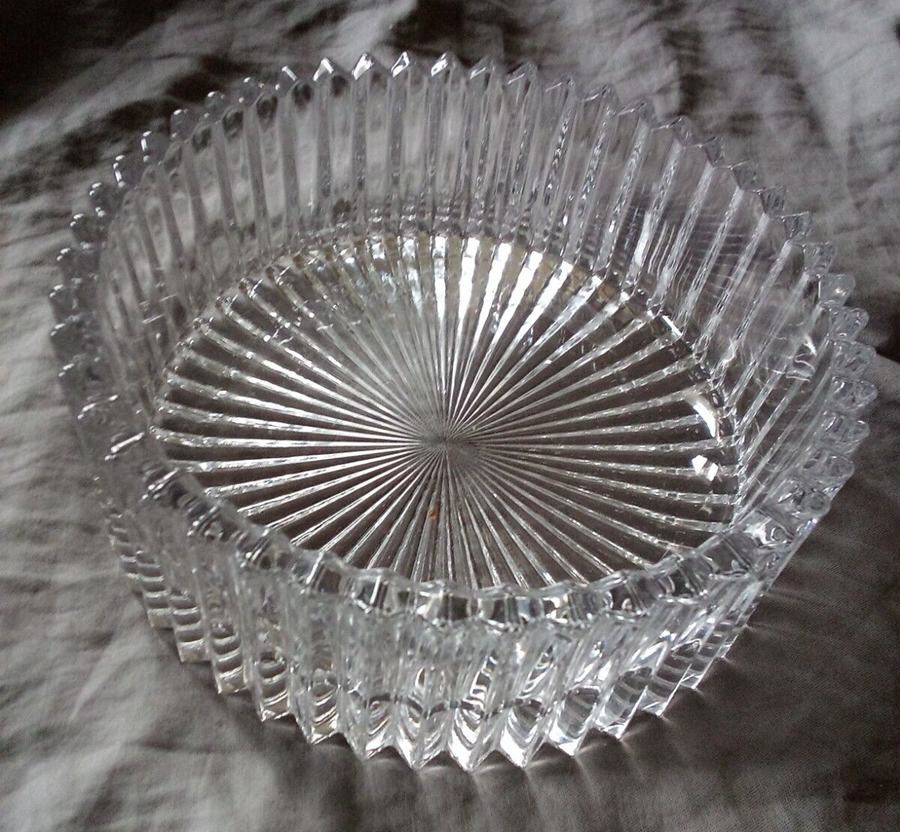
The Flute pattern features vertical, curving lines reminiscent of elaborate fluting. Check for even, parallel lines and soft curve shapes.
Notched Prism
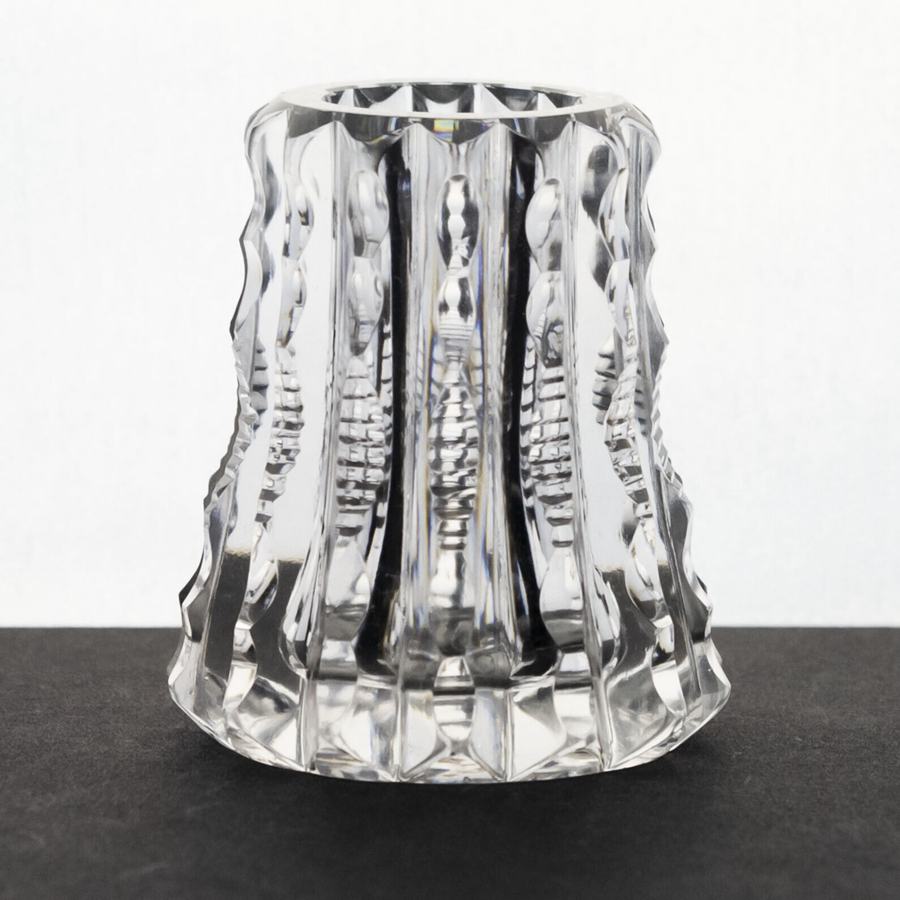
Notched Prism patterns are characterized by their linear cuts, with notches at evenly spaced intervals. Look for symmetrical designs and well-defined, uniform notches.
Swirl
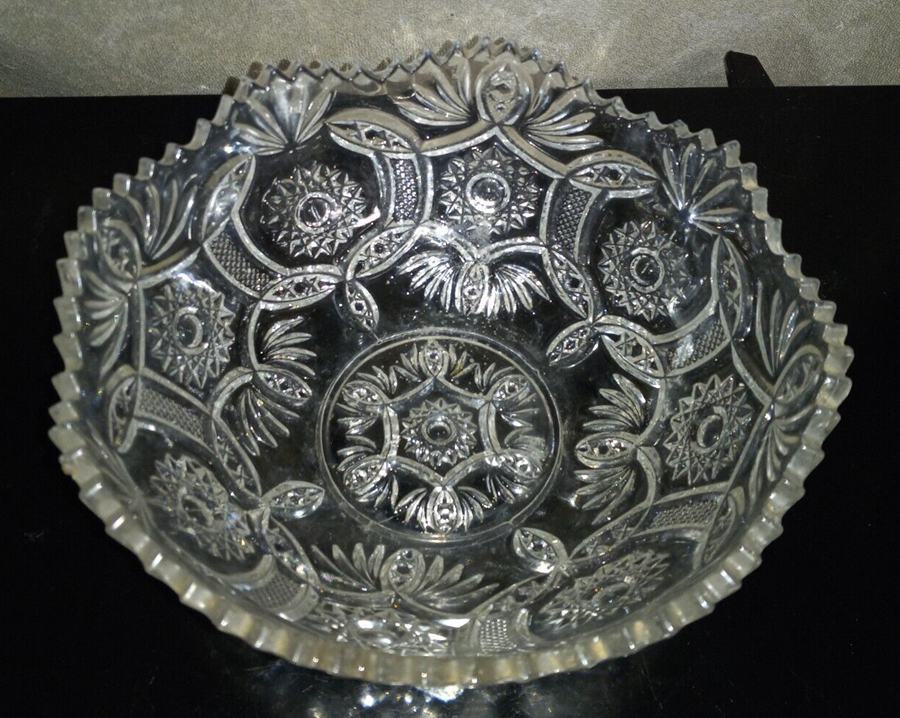
Swirl patterns typically showcase fluid, swirling designs that can vary in style. To identify this pattern, look for graceful curves and a sense of movement within the design.
Fan and Cross
Fan and Cross patterns feature a series of fan shapes interspersed with cross-like forms. Look for a balanced mix of two distinctive shapes and well-defined cuts.
Remember to look for unique features and markings such as logos or signatures to authenticate and identify the patterns. Keep in mind the glass’s age, brand, and sharpness as valuable indicators.
Factors That Affect Antique Cut Glass Values
When it comes to determining the value of antique cut glass items, several factors come into play. Understanding these factors will help you identify and assess the worth of your antique glass pieces more accurately.
Rarity: The rarity of a cut glass pattern or color can significantly impact its value. If there were many pieces made in a specific pattern or color, it’s usually less valuable. On the other hand, rare patterns and colors might be worth more to collectors. For instance, ice green carnival glass is known to sell for over $16,000 due to its rarity.
Age: Antique cut glass pieces dating back to earlier periods are typically more valuable, especially if they showcase the peak of craftsmanship or feature distinct stylistic elements from that era.
Size and Type: The size and type of the antique glassware item can also influence its value. Complete sets of items or larger objects tend to hold more value compared to individual or smaller pieces.
Condition: The condition of a cut glass piece plays a crucial role in determining its value. Pieces with chips, cracks, discoloration, or other damage will be worth less than similar items in perfect condition.
Quality of Cutting: Vintage American glassware styles are often highly prized for their intricate cuts and expert craftsmanship. The finesse of the cutting, as well as the precision and clarity of the pattern, can affect the overall value. For example, the Trellis cut glass (1908) is precision-cut and branded, making it worth around $14,000 – 15,000.
As you assess your antique cut glass pieces, take these factors into account to understand their value better. With this knowledge, you can make more informed decisions when buying or selling antique glassware items.
Final Thoughts
As you continue exploring the world of antique cut glass patterns, remember that identification and pricing can often be complex. However, by paying attention to certain key factors, you can successfully navigate this fascinating area of collectible glassware.
First, take time to learn about the most common patterns. Some examples include Aztec by Libbey, Chrysanthemum by T.G. Hawkes, and Rosella by Libbey. By becoming familiar with popular designs, you will more easily identify vintage cut glass pieces.
When assessing the value of antique cut glass, consider the age, brand, sharpness, and overall quality of the piece. Vintage designs from the 1860s, for example, tend to display mitered, natural forms and can range in price from $600 to $700. Handmade items are often worth more than machine-produced pieces. To ensure an accurate price estimate, consult reputable glassware price guides or consult with an experienced collector or appraiser.
Lastly, don’t forget that education and practice are essential when it comes to identifying and valuing antique cut glass patterns. With time and effort, you will hone your skills and become a more knowledgeable collector. So go ahead, immerse yourself in the beautiful world of antique cut glass, and enjoy discovering its unique and rich history.

